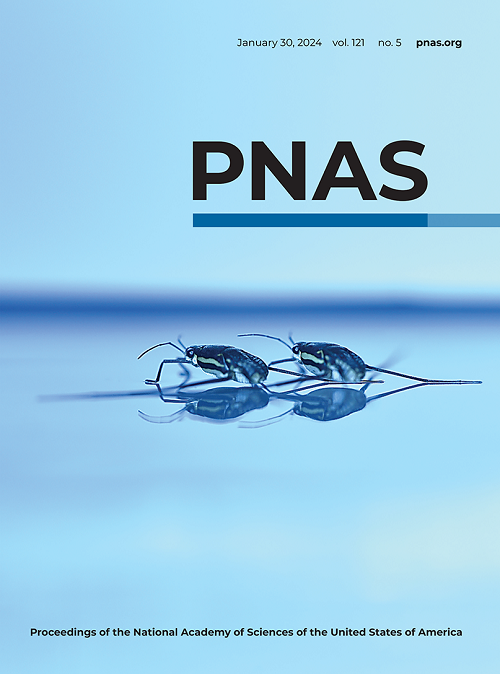Mapping global brain reconfigurations following local targeted manipulations
IF 9.4
1区 综合性期刊
Q1 MULTIDISCIPLINARY SCIENCES
Proceedings of the National Academy of Sciences of the United States of America
Pub Date : 2025-04-18
DOI:10.1073/pnas.2405706122
引用次数: 0
Abstract
Understanding how localized brain interventions influence whole-brain dynamics is essential for deciphering neural function and designing therapeutic strategies. Using longitudinal functional MRI datasets collected from mice, we investigated the effects of focal interventions, such as thalamic lesions and chemogenetic silencing of cortical hubs. We found that these local manipulations disrupted the brain’s ability to sustain network-wide activity, leading to global functional connectivity (FC) reconfigurations. Personalized mouse brain simulations based on experimental data revealed that alterations in local excitability modulate firing rates and frequency content across distributed brain regions, driving these FC changes. Notably, the topography of the affected brain regions depended on the intervention site, serving as distinctive signatures of localized perturbations. These findings suggest that focal interventions produce consistent yet region-specific patterns of global FC reorganization, providing an explanation for the seemingly paradoxical observations of hypo- and hyperconnectivity reported in the literature. This framework offers mechanistic insights into the systemic effects of localized neural modulation and holds potential for refining clinical diagnostics in focal brain disorders and advancing personalized neuromodulation strategies.绘制局部定向操作后的全局大脑重构图
了解局部脑干预如何影响全脑动力学对于破译神经功能和设计治疗策略至关重要。利用从小鼠身上收集的纵向功能MRI数据集,我们研究了局灶性干预的影响,如丘脑病变和皮质中心的化学发生沉默。我们发现,这些局部操作破坏了大脑维持整个网络活动的能力,导致了全球功能连接(FC)的重新配置。基于实验数据的个性化小鼠大脑模拟显示,局部兴奋性的改变可调节分布大脑区域的放电速率和频率内容,从而驱动这些FC变化。值得注意的是,受影响的大脑区域的地形取决于干预地点,作为局部扰动的独特特征。这些研究结果表明,重点干预产生了一致但区域特异性的全球FC重组模式,为文献中报道的低连接和超连接的看似矛盾的观察结果提供了解释。该框架为局部神经调节的系统效应提供了机制见解,并具有改进局灶性脑疾病临床诊断和推进个性化神经调节策略的潜力。
本文章由计算机程序翻译,如有差异,请以英文原文为准。
求助全文
约1分钟内获得全文
求助全文
来源期刊
CiteScore
19.00
自引率
0.90%
发文量
3575
审稿时长
2.5 months
期刊介绍:
The Proceedings of the National Academy of Sciences (PNAS), a peer-reviewed journal of the National Academy of Sciences (NAS), serves as an authoritative source for high-impact, original research across the biological, physical, and social sciences. With a global scope, the journal welcomes submissions from researchers worldwide, making it an inclusive platform for advancing scientific knowledge.

 求助内容:
求助内容: 应助结果提醒方式:
应助结果提醒方式:


